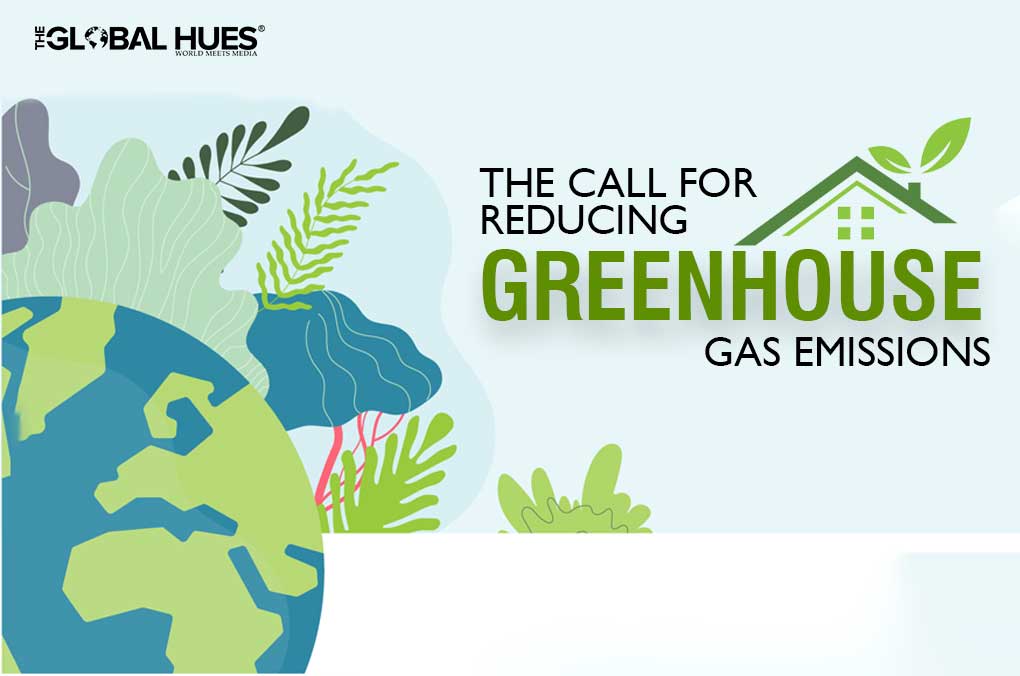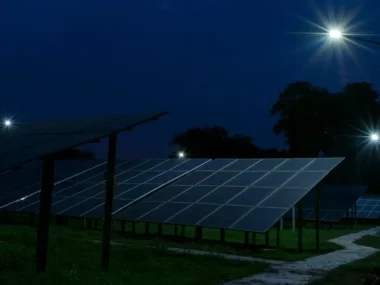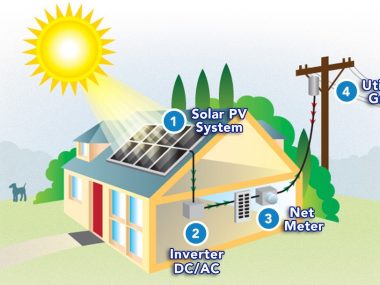Climate change presents a significant danger to ecosystems, economies, and communities worldwide, primarily due to the rising concentration of greenhouse gases (GHGs) in the atmosphere resulting from human activities like burning fossil fuels.
To address this crisis, a shift towards sustainable and renewable energy sources is necessary, as they can greatly reduce GHG emissions. Solar energy, which utilizes the sun’s power to generate electricity, emerges as a crucial element in this transition.
It offers a practical, scalable, and clean alternative to fossil fuels, with the potential to significantly decrease carbon emissions and mitigate the adverse effects of climate change.
Solar energy plays a vital role in mitigating climate change in several profound ways. It provides a carbon-neutral source of electricity, directly replacing power generation from fossil fuels and thereby reducing CO₂ emissions and other harmful pollutants.
By integrating into both centralized and decentralized energy systems, solar power enhances the resilience and sustainability of energy infrastructures, making them less susceptible to disruptions and climate-related impacts.
Moreover, ongoing advancements in solar technology continue to improve efficiency and lower costs, making solar power more accessible and economically viable on a global scale.
Furthermore, the deployment of solar energy supports economic growth by creating environmentally friendly jobs and fostering energy independence. It promotes equal access to clean energy, particularly in remote and underserved areas, thereby contributing to social and economic development.
As nations strive to fulfill their climate objectives under international agreements like the Paris Agreement, the role of solar energy becomes increasingly crucial in shaping a sustainable, low-carbon future. This introduction sets the stage for exploring the multifaceted ways in which solar energy can drive global efforts to mitigate climate change, underscoring its significance in establishing a sustainable and resilient energy landscape.
Solar power has the potential to significantly aid in global climate change mitigation by cutting down on greenhouse gas emissions, lessening dependence on fossil fuels, and fostering sustainable and robust energy infrastructures. Here is a detailed examination of how solar energy bolsters these initiatives.
1 Reduction of Greenhouse Gas Emissions
Decreased Fossil Fuel Dependence: Solar power produces electricity without the need to burn fossil fuels, which are primary contributors to carbon dioxide (CO₂) and other harmful greenhouse gases. By substituting coal, oil, and natural gas with solar energy, we can greatly diminish the release of these gases into the atmosphere.
Lower Lifecycle Emissions: Solar panels offer a sustainable energy solution with a minimal carbon footprint throughout their lifecycle, making them a more environmentally friendly choice than fossil fuels.

2. Energy Independence and Security
Decentralized Energy Production: Solar panels have the capability to be mounted on rooftops, in open fields, and in isolated regions, which helps minimize the necessity for extensive energy infrastructure and transmission lines. This dispersal of energy sources improves energy security and lessens susceptibility to interruptions.
Reduced Energy Imports: Nations have the opportunity to decrease their dependence on foreign fossil fuels by allocating resources towards developing local solar energy generation, which can improve both national energy security and economic resilience
3. Economic and Job Benefits
Job Creation: The solar sector creates employment opportunities in various fields such as manufacturing, installation, maintenance, and research. As per the International Renewable Energy Agency (IRENA), there has been substantial global job expansion in renewable energy industries, including solar power.
Economic Growth: Investment in solar energy infrastructure stimulates economic activity and can lead to the development of new technologies and industries.

4. Technological Advancements and Cost Reductions
Improved Efficiency: Solar panels have become more efficient and affordable due to advancements in solar technology, resulting in increased accessibility and competitiveness of solar energy compared to conventional energy sources.
Energy Storage Solutions: Innovations in energy storage, such as batteries, allow for the effective use of solar power even when the sun is not shining, enhancing the reliability of solar energy systems.
5. Sustainable Development
Access to Clean Energy: Solar power has the potential to offer dependable electricity to marginalized and isolated regions, thereby enhancing quality of life and facilitating sustainable growth. This is especially significant in developing nations, where the availability of energy can propel economic and societal advancement.
Water Conservation: Solar photovoltaic (PV) systems are known for their minimal water usage, in stark contrast to thermal power plants that rely heavily on water for cooling purposes, thus helping to preserve valuable water resources.

6. Support for Climate Policies and Targets
Alignment with Climate Goals: Solar power plays a crucial role in numerous domestic and global climate strategies, including the Paris Agreement, with the objective of restricting the increase in global temperatures to less than 2°C compared to pre-industrial times
Scalability: Solar power has the potential to be expanded quickly in order to address rising energy needs and lower carbon emissions, playing a vital role in the effort to reach climate goals.
7. Reduction of Air Pollution
Cleaner Air: By reducing the need for fossil fuels, solar energy helps decrease air pollution, which has significant health benefits, including reduced respiratory and cardiovascular diseases.
Conclusion
Solar power plays a crucial role in combating climate change. Its capacity to lower greenhouse gas emissions, stimulate economic progress, bolster energy security, and foster sustainable development renders it an essential instrument for attaining a greener, more sustainable tomorrow. Through ongoing investments in and utilization of solar technology, we can take substantial steps towards lessening the effects of climate change and securing a healthier environment for the generations to come.













